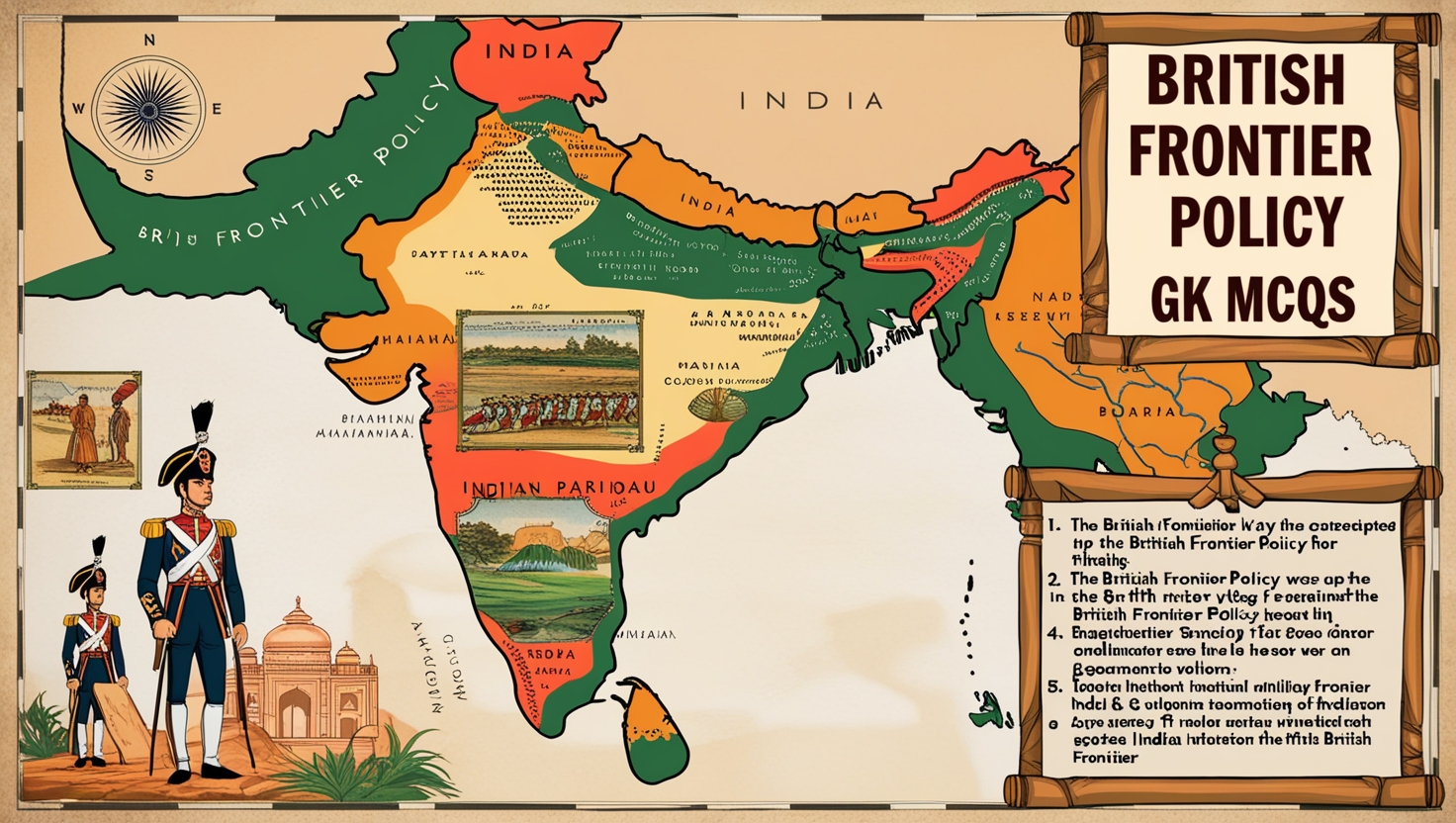
1. Who was the Amir of Afghanistan when the Durand Line was demarcated?
- Dost Mohammad
- Akbar Khan
- Abdur Rahman
- Habibulah
Show Answer
Answer: Abdur Rahman
The Durand Line, established in 1892, was demarcated by Sir Henry Mortimer Durand during the viceroyship of Lord Lansdowne. This line marked the boundary between British India and Afghanistan, and the agreement aimed to define and secure the limits of British influence in the region. Abdur Rahman Khan was the Emir of Afghanistan at that time.
2. Which ruler of Afghanistan was known as a Reformer Ruler and established diplomatic relations with many countries?
- Abdur Rahman
- Amanullah Khan
- Habibullah Kalakani
- None of them
Show Answer
Answer: Amanullah Khan
Amanullah Khan served as the sovereign prince of the Kingdom of Afghanistan from 1919 to 1929. He was a notable Reformer Ruler who initiated diplomatic relations with multiple countries. Following the Third Anglo-Afghan War, Afghanistan gave up its status as a protected state and declared full independence.
3. The Treaty of Yandabo was signed after which of the following wars?
- First Anglo-Burmese War
- Second Anglo-Burmese War
- Anglo-Bhutanese War
- Third Anglo-Afghan War
Show Answer
Answer: First Anglo-Burmese War
The Treaty of Yandabo was signed on February 24, 1826, ending the First Anglo-Burmese War. This treaty was between the British, represented by General Sir Archibald Campbell, and the Burmese side. It led to the cession of territories to the British.
4. “Great Game” is a term used for the strategic rivalry and conflict between which of the following?
- British Empire and Russian Empire
- British Empire and French Empire
- British Empire and Portuguese
- Empire British Empire and Chinese Empire
Show Answer
Answer: British Empire and Russian Empire
“The Great Game” refers to the strategic rivalry and conflicts between the British Empire and the Russian Empire during the 19th century. This competition centered around the influence and control of territories, particularly Afghanistan and surrounding regions.
5. The comment “The most unqualified blunder committed in the whole history of the British India” points to which of the following wars?
- First Anglo-Afghan War
- Second Anglo-Afghan War
- Third Anglo-Afghan War
- First Anglo-Sikh War
Show Answer
Answer: First Anglo-Afghan War
The comment refers to the First Anglo-Afghan War (1839-1842), also known as Auckland’s Folly. It was a disastrous expedition undertaken by Lord Auckland and resulted in the death of thousands of British (Indian) soldiers and a waste of large amounts of money.
6. What was the real cause of the Third Anglo-Burmese War?
- The King of Burma killed a British court attendant.
- The King of Burma involved in a conspiracy with France against the British.
- The King of Burma tried to invade British territory in India.
- None of the above
Show Answer
Answer: The King of Burma involved in a conspiracy with France against the British.
During the Third Anglo-Burmese War, King Theebaw of Burma sought to form an alliance with France by offering them exclusive privileges to fight against the British. This alliance attempt ultimately led to the war, in which the British defeated Burma and annexed it in 1886.
7. In which year was the Durand Line agreement between India and Afghanistan approved?
- 1889
- 1891
- 1893
- 1895
Show Answer
Answer: 1893
The Durand Line agreement, defining the border between India and Afghanistan, was approved in 1893 during Lord Lansdowne’s tenure as Viceroy. Sir Mortimer Durand was appointed to negotiate and sign the agreement with the Afghan Emir.
8. In which year was the Treaty of Kalat signed?
- 1875
- 1879
- 1882
- 1885
Show Answer
Answer: 1875
The Treaty of Kalat was established in 1875, an agreement between the British Raj and the Baloch tribes residing along the borders of the Punjab region, which is now in modern-day Pakistan.
9. What was the policy of an innovative system of tribal pacification in Balochistan of Robert Groves Sandeman known as?
- Policy of Ring Fence
- Sandmanion
- Sandemanization
- Policy of Invasion
Show Answer
Answer: Sandemanization
The policy known as “Sandemanization” was developed by Robert Groves Sandeman and implemented in Balochistan from 1877 to 1947. This policy aimed to pacify tribal areas in Balochistan, though it was met with opposition from the Government of India.
10. Who rejected the Forward Policy of Lord Lytton?
- Lord Ripon
- Lord Elgin
- Lord Curzon
- Lord Irwin
Show Answer
Answer: Lord Curzon
Lord Curzon, during his tenure as Viceroy of India, rejected Lord Lytton’s Forward Policy. Instead, he opted for his own approach, which involved withdrawing a significant number of troops from areas that were previously considered forward positions, such as the Khyber Pass, the Kurram Valley, and Waziristan.
Q11: In which year was the North-West Frontier Province established?
1. 1886
2. 1901
3. 1906
4. 1911
Show Answer
Answer: 2
Explanation: The North-West Frontier Province was established in 1901 and remained under the administration of a Chief Commissioner. In 1938, it was renamed Khyber Pakhtunkhwa, and in 2010, it became a full-fledged province of Pakistan.
Q12: The British Government of India had an interest in Afghanistan in the nineteenth century due to which of the following reasons?
1. Make use of the natural resources of Afghanistan.
2. Ensure that the Russian Empire did not have an influence over Afghanistan.
3. Increase the reach of the British Empire.
4. Establish a monopoly over the markets of Afghanistan.
Show Answer
Answer: 2
Explanation: British interest in Afghanistan during the 19th century was driven by the desire to maintain Afghanistan as a buffer state between British India and the Russian Empire. This geopolitical strategy was aimed at preventing Russian influence in the region.
Q13: Which period is associated with the Second Afghan War?
1. 1878-80
2. 1880-82
3. 1882-84
4. 1884-86
Show Answer
Answer: 1
Explanation: The Second Anglo-Afghan War occurred between 1878 and 1880, marking a significant conflict between the British and the Emirate of Afghanistan.
Q14: In which year was Burma annexed by the British?
1. 1882
2. 1883
3. 1884
4. 1885
Show Answer
Answer: 4
Explanation: Burma was annexed by the British in 1885 following the Third Anglo-Burmese War. This resulted in the establishment of Burma as a province of British India.
Q15: Invasion of Tibet in 1903 took place under which of the following?
1. Lord Dalhousie
2. Lord Dufferin
3. Lord Curzon
4. Lord Hastings
Show Answer
Answer: 3
Explanation: The invasion of Tibet by the British occurred in 1903, during Lord Curzon’s viceroyship. Several annexations took place in the northwest during the 1890s to counter the Russian advance.
Q16: Our true policy is a peaceful policy. Who said this?
1. Jawaharlal Nehru
2. C. Sankaran Nair
3. Mahatma Gandhi
4. Rajendra Prasad
Show Answer
Answer: 3
Explanation: Sankaran Nair, who served as Congress president in 1897, advocated for a peaceful policy.
Q17: In which year did the East India Company annex Punjab?
1. 1840
2. 1845
3. 1849
4. 1853
Show Answer
Answer: 3
Explanation: The East India Company annexed Punjab in 1849, which was previously occupied by Ranjit Singh and later taken over by the East India Company.
Q18: During which period did the First Anglo-Afghan War take place?
1. 1839 to 1842
2. 1849 to 1852
3. 1859 to 1862
4. 1869 to 1872
Show Answer
Answer: 1
Explanation: The First Anglo-Afghan War took place from 1839 to 1842, resulting in significant losses for the British East India Company.
Q19: In which years did the First Anglo-Sikh War happen?
1. 1845 and 1846
2. 1847 and 1848
3. 1849 and 1850
4. 1850 and 1851
Show Answer
Answer: 1
Explanation: The First Anglo-Sikh War occurred in 1845 and 1846, leading to the partial subjugation of the Sikh kingdom.
Q20: During which years did the Second Anglo-Sikh War take place?
1. 1848-1849
2. 1850-1851
3. 1852-1853
4. 1854-1855
Show Answer
Answer: 1
Explanation: The Second Anglo-Sikh War took place in 1848 and 1849, resulting in the fall of the Sikh Empire and the annexation of Punjab by the British East India Company.
Q21: During which period did the British rule in Burma?
1. 1814 to 1938
2. 1820 to 1940
3. 1824 to 1948
4. 1834 to 1954
Show Answer
Answer: 3
Explanation: The British ruled in Burma from 1824 to 1948. The three successive Anglo-Burmese wars led to the creation of Burma as a province of British India and later to the establishment of an independently administered colony, and finally independence.
Q22: In which year did Burma achieve independence from the British?
1. 1946
2. 1948
3. 1950
4. 1952
Show Answer
Answer: 2
Explanation: Burma achieved independence from British rule on January 4, 1948, following the Third Anglo-Burmese War in 1885 and the subsequent evolution of its status from an independently administered colony to an independent nation.
Q23: During which year did the Second Burmese War take place?
1. 1850
2. 1852
3. 1854
4. 1856
Show Answer
Answer: 2
Explanation: The Second Burmese War occurred in 1852, driven primarily by British commercial interests. The conflict resulted in the annexation of Lower Burma by the British. This expansion aimed to secure trading routes and resources in the region.
Q24: In which year did the Raja of Sikkim cede the territory around Darjeeling to the British in return for an annual money grant?
1. 1830
2. 1832
3. 1835
4. 1837
Show Answer
Answer: 3
Explanation: In 1835, the Raja of Sikkim ceded the territory around Darjeeling to the British. The British acquired this region in exchange for an annual monetary grant. Sikkim is located to the north of Bengal, neighboring Nepal and serving as a border between Tibet and India.
Q25: In which year was the Anglo-Chinese agreement signed?
1. 1890
2. 1900
3. 1910
4. 1920
Show Answer
Answer: 1
Explanation: The Anglo-Chinese agreement of 1890 formally recognized Sikkim as a British protectorate. Under this treaty, the Government of India gained exclusive control over Sikkim’s internal administration and foreign relations.
Q26: In which year did the Gurkhas, a Western Himalayan tribe, conquer the Kathmandu valley?
1. 1760
2. 1764
3. 1768
4. 1882
Show Answer
Answer: 3
Explanation: The Shah era in Nepal commenced when Gorkha King Prithvi Narayan Shah successfully invaded the Kathmandu Valley in 1768. His conquests led to the unification of Nepal under the Gurkha rule.
Q27: During which year was the Treaty of Sugauli concluded?
1. 1810
2. 1812
3. 1814
4. 1816
Show Answer
Answer: 4
Explanation: The Treaty of Sugauli, concluded in 1816 between British India and the Kingdom of Nepal, played a significant role in defining the boundary between the two nations. This treaty established the Gandak River as the international boundary and resulted in the British annexation of Kumaon and a substantial portion of Garhwal.
Q28: In which year did the Indian Government, Maharaja Ranjit Singh, and Shah Shuja sign a treaty at Lahore?
1. 1838
2. 1840
3. 1842
4. 1842
Show Answer
Answer: 1
Explanation: The Tripartite Treaty, signed in Lahore on June 26, 1838, involved the British, Maharaja Ranjit Singh, and Shah Shuja. It stipulated that Shah Shuja would be supported by the first two parties in regaining power in Afghanistan. In return, Shah Shuja acknowledged Ranjit Singh’s claims over territories on the right bank of the Indus and agreed to shape his foreign policy under British guidance.
Q29: The Tripartite Treaty, 1838, which ultimately resulted in the First Anglo-Afghan War, was a treaty between which parties?
1. Ranjit Singh, Shah Shuja, and the British
2. Dost Mohammad, Shah Shuja, and the British
3. Dost Mohammad, Ranjit Singh, and Lord Ellenborough
4. Shah Shuja, Ranjit Singh, and Dost Mohammad
Show Answer
Answer: 1
Explanation: On 26 June 1838, a treaty was signed between the British, Shah Shuja and Maharaja Ranjit Singh, known as the Tripartite Treaty. According to this treaty, Shah Shujah accepted the suzerainty of Maharaja Ranjit Singh on all Afghan territories, which included Kashmir, Multan, Peshawar, Attock, and Derajat.
Q30: Which treaty reopened the diplomatic relations between Dost Mohammad Khan and the British after the first Anglo-Afghan War?
1. Treaty of Peshawar
2. Treaty of Lahore
3. Treaty of Kalat
4. Treaty of Kabul
Show Answer
Answer: 1
Explanation: The Treaty of Peshawar, signed on March 30, 1855, marked the reestablishment of diplomatic relations between the British and Dost Mohammad Khan after the conclusion of the First Anglo-Afghan War. This treaty contributed to renewed stability in the region.
Q31: By which of the below treaties did Afghanistan lose its right to conduct independent foreign policy?
1. Treaty of Peshawar
2. Treaty of Gandamak
3. Treaty of 1857
4. Treaty of Lahore
Show Answer
Answer: 2
Explanation: The Treaty of Gandamak, signed in 1879, had significant consequences for Afghanistan’s sovereignty. It stipulated that Afghanistan would become a state dependent on England, with a loss of independence in conducting foreign relations. The British resident in Kabul gained authority over the country’s internal affairs.
Q32: Which war led the British to switch to the policy of masterly inactivity?
1. First Anglo-Afghan War
2. Second Anglo-Afghan War
3. First Anglo-Sikh War
4. First Anglo-Maratha War
Show Answer
Answer: 1
Explanation: Following the disastrous First Anglo-Afghan War (1839-1842), British policy shifted to a strategy of masterly inactivity. This approach entailed a commitment to non-interference in Afghan affairs, in contrast to the earlier interventionist policy.
Q33: By which of the following treaties did the British recognize Afghanistan as an independent and sovereign state?
1. Treaty of Gandamak
2. Treaty of Lahore
3. Treaty of Peshawar
4. Treaty of Rawalpindi
Show Answer
Answer: 4
Explanation: Towards the end of the Third Anglo-Afghan War, both the British and Afghanistan signed the Treaty of Rawalpindi in 1923. Under this treaty, King Amanullah of Afghanistan recognized the Durand Line as the border with British India, while the British acknowledged Afghanistan’s independence and sovereignty as a state.
Q34: Which war was concluded with the Treaty of Sinchula?
1. Third Anglo-Burmese War
2. Bhutan War
3. Anglo-Gurkha War
4. Second Anglo-Burmese War
Show Answer
Answer: 2
Explanation: The Bhutan War, also known as the Duar War, concluded with the defeat of the Bhutanese army. The peace settlement was achieved through the Treaty of Sinchula, signed on November 11, 1865. As part of this treaty, Bhutan ceded territories in the Assam Duars and Bengal Duars, as well as the area around Dewangiri (Deothang), to the British. In exchange, Bhutan received an annual subsidy of 50,000 rupees. This treaty led to territorial adjustments and a subsidy agreement between Bhutan and the British.







